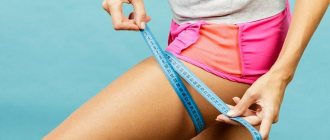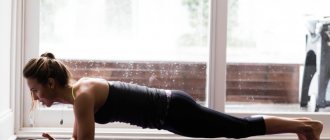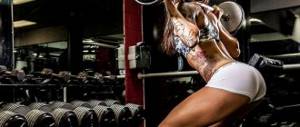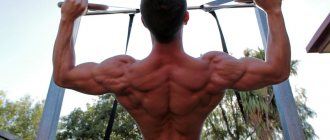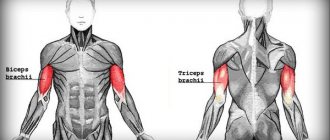How to get rid of ears on thighs
The process of burning fat in such problem areas is very long and difficult. These areas are selected by the body to store the bulk of energy and do not go away on their own or when performing basic exercises. Ears appear for the following reasons:
- the body's tendency to quickly gain weight;
- inactive lifestyle;
- poor muscle tone;
- diseases affecting hormonal processes in the body.
To remove fat from the upper thigh, you need to perform special exercises for the riding breeches area. They tighten and strengthen muscles, remove wrinkles. Breeches exercises should be accompanied by long-term diets, excluding fatty foods from the diet, and reducing the consumption of sweets and salty foods.
For such purposes, carbohydrate nutrition is well suited. Products containing a lot of fiber are slowly absorbed and satisfy hunger for a long time.
Why does riding breeches appear on the hips?
There are only two main reasons:
- Excess fat that the body accumulates under the skin, “extracting” it from food. This layer is a dense solid mass, which is extremely difficult to get rid of.
- Hormonal background. Often, “ears” appear in girls with characteristics of estrogen production, which is directly related to the formation of the subcutaneous fat layer.
Subscribe to our INSTAGRAM account!
Proper nutrition and a set of effective exercises will help you cope with this problem.
Top 5 basic exercises for the riding breeches area
You can quickly get rid of fat deposits on the upper thigh through physical activity that involves this area. You should perform 4-5 different exercises, doing 2-3 approaches with short breaks. You need to do at least 3-4 full-fledged workouts per week - then the results will become noticeable in a month.
In order for exercises against the ears on the hips to remain effective, the load must be gradually increased. When you feel that you can easily cope with training, you can start using additional equipment. So, exercises from the ears on the hips with a tubular expander or elastic band will help restore muscle tone. Adding weights for your arms and legs will make your cardio workout more productive.
Swing your leg to the side
These exercises work the gluteus maximus and posterior gluteus muscles. To improve performance, small weights can be attached to the ankles. It is important to keep your body straight at all times and not strain muscles that are not needed in this technique. All swings are done 60 times in 3 approaches:
- Swing from a standing position. Standing position, feet shoulder-width apart, hands resting on a fixed support (wall, crossbar, etc.). The legs are alternately moved to the sides with the maximum possible amplitude, then returned to the starting position.
- Swings from a lying position. Lying on your side, hands resting on the floor. The leg moves up, then comes back.
- Swing with a bent leg. Kneeling position, back straight, hands shoulder-width apart, resting on the floor. The bent legs are alternately pulled back until the thigh is parallel to the floor.
Lunges
The exercise trains and strengthens the gluteal muscles, and a large number of calories are burned during exercise. It is recommended to use leg weights. After each approach, it is important to take a short rest break (60–80 seconds) so that the muscles do not become overworked ahead of time. It is better to do lunges in combination, 2-3 types of exercises, each - 3 sets of 15 lunges:
- Classic. Position: body straight, toes brought together. The legs alternately step forward, bending at the knee, until the thigh is parallel to the surface of the floor.
- Diagonal. Position: feet shoulder-width apart, arms extended along the body or resting on the sides. The feet are alternately moved back, the leg is placed on the toe, bending at the knee until the thigh is parallel to the surface of the floor.
Squats
Such exercises from breeches engage the gluteal muscles and inner thighs, effectively removing fat deposits from them. To make your workouts more challenging, you can place a bar (empty or loaded) on your shoulders during squats:
- Plie squats. Starting position: feet spaced 1.5 times shoulder width apart, hands resting on your sides. The legs are bent while the knees are spread apart. The thigh drops no lower than the level of the knee joint, pauses for 2-3 seconds, then returns to its original position. 15 times, 3 sets.
- Shoulder width. Starting position: feet shoulder-width apart, back straight. The knees bend, the hips drop below the level of the knees, then return to the starting position. 2 sets of 20 times.
Shell
The technique works with the outer surface of the thigh, giving it relief, removing breeches and promoting rapid weight loss. After regular repetitions, the exercise will become too easy - tie your knees with an elastic band to increase the load to the desired level:
- Classic. Position: lying on your side, legs bent at the knees. The leg is raised until the angle between the thighs is 90–100°. 30 times, 4 sets.
- With a leg lift. Position: lying on your side, legs bent at the knees, feet raised above the floor. The legs are spread apart until a right angle appears between the thighs. 25 times, 3 sets.
What should you know before you start dealing with the problem?
If your main goal is to eliminate “butt ears,” then you will have not only cardio training (fitness, dance aerobics, running or brisk walking, etc.), but also strength training. The thing is that reducing volumes in the problem area can only be achieved by activating local fat burning processes.
But let’s return to the very definition of what ears on the hips are, what causes unfortunate folds in girls, and how to deal with them. As you can see in the photo, fat deposits localized on the side of the thighs received this specific name. Moreover, your legs may be slender and thin, but all the beauty of contemplating them can be spoiled by folds protruding on the sides.
Excess fat cells accumulating in the riding breeches area will be very difficult to eliminate only with exercises for the muscles located in the upper part of the legs on the side. When exposed locally, they are not consumed. The body will be able to process them only if it begins to receive fewer calories and has time to spend them during sports.
Excess calories are one of the main reasons why ears appear on the sides of the thighs. But such bulges can also occur due to a genetic predisposition, as well as a sedentary lifestyle, poor nutrition, in general. It is most difficult for girls and women with a pear body type to eliminate fatty layers on their legs.
There is also an anatomical explanation for why fatty layers form on the sides. It is due to the fact that the area of ear formation is represented by more connective tissue and muscles. The fact is that in the area where the breeches appear, the ends of the gluteus maximus muscle are attached, surrounded by small fibers that are not muscles. And due to the fact that the breeches zone is represented mostly by connective tissue, slow blood circulation occurs in it. The result of this is the accumulation and stagnation of fat cells.
However, you shouldn’t get upset prematurely, because hard work and proper nutrition will help return your hips to their beautiful shape. And it is very important to start dealing with the problem at the first symptoms. You can get rid of bulges on your thighs if you create an individual training program in a timely manner, including only the most effective exercises. In addition, you need to reconsider your diet, eliminating everything harmful from it:
- sweets
- fried and salty foods
- fast food
- flour, etc.
It is also worth trying cosmetic procedures that help speed up blood circulation and metabolism in the upper thighs.
Cardio exercises for the outer thighs
Breeches are formed not only due to fat deposits, but also due to flabby muscles. Hanging, they form folds. To tighten them, simple exercises should be supplemented with cardio training. They will increase the tone of muscle tissue in problem areas and create a beautiful relief.
The most effective exercise for eliminating breeches is considered to be various variations of jumps: with pulling up the knees, wide squats, swings, etc. Supplementing a standard cardio training program will speed up the fat burning process. Aerobic exercise increases the efficiency of metabolism and forces the body to use up fat reserves from the riding breeches.
During such training, you should drink up to 3 liters of clean water per day. The body needs it to carry out metabolic processes and remove excess salts.
Side jumps
The starting position for execution is a half squat, feet apart shoulder width apart. Use your lead foot to push off the floor with force, jumping and transferring your weight fully to your other foot immediately upon landing. You need to repeat this movement for 2-3 minutes. The exercise uses the adductor and abductor muscles and calves.
Side kicks
The technique uses the lateral thigh muscles. To perform the exercise, you need to stand up straight, raise your arms to your chest, and transfer your weight to your supporting leg. The second leg bends at the knee, pulls it towards the stomach, then straightens, delivering a quick kick in the air. You need to repeat the movement 15–20 times, 2 approaches with both legs.
Dynamic plank with jumps
The starting position for this technique is a prone position. Performing an exercise to get rid of riding breeches begins with sharply pulling your knees to your chest. This is followed by jumping up and landing, taking the starting position. Cardio exercise is done in two to three sets of 45–60 seconds. The upper thigh muscle and gluteal muscle are involved.
Jumping out of a deep squat
Starting position: legs are shoulder-width apart, feet pointing to the sides, back straight, arms crossed over chest. The exercise begins with a deep squat, from which, without stopping, you need to make a jerk upward, ending with a jump. After landing, if the set is not yet completed, the squat-snatch cycle should be repeated. Before performing, you need to thoroughly stretch your legs so as not to injure your knees. In total you need to do 2-3 approaches (12-15 repetitions).
What are hip lugs?
So, what is this problem - ears on the hips?
It primarily comes from genetic predisposition. At the same time, female hormones such as estrogen and progesterone control the concentration of fat in these places.
This problem is most common in women with a pear body type. They are distinguished by thin shoulders and arms, slender waists and large hips and buttocks.
Fat deposits can be of several types:
- functional (superficial);
- backup (deep).
Superficial deposits often occur as a result of an inactive lifestyle, as well as the intake of excessive amounts of calories. Most salon procedures, as well as diets, are aimed at eliminating this surface layer.
The second layer is the reserve layer - it is formed starting from the age of 13 and continues until the age of 22, promoting the production of estrogen.
When the menstrual cycle finally stabilizes, the body no longer needs these additional reserves of fat cells. Then the layer becomes dense and covered with connective fibrous tissue and turns into that “breeches” that spoils the lives of women.
This area does not receive blood to disperse fat throughout the body, as a result, the ears become colder to the touch compared to other areas of the body.
It should be understood that it is impossible to lose weight locally - only on the hips, waist or abdomen. Only general weight loss can reduce the fat accumulated around the thighs.
- The best place to start on your journey is to start a food journal. Throughout the week, you should write down all the food that a person eats.
Thus, you can see your portion size, how many calories come in with liquids, and the amount of high-fat foods consumed.
In order to start the process of destroying wide hips, you should first review your diet:
- exclude high-calorie foods;
limit salt intake;
- drink a lot of clean water, 2 liters per day;
- after 18.00 do not consume carbohydrates.
- When it comes to weight loss, choose foods that include low-calorie, low-fat proteins: poultry, eggs, low-fat dairy, seafood, legumes and tofu.
The diet must include fresh vegetables, fruits and herbs.
It is also worth paying attention to whole grain products, they contain more fiber and nutrients.
- You should definitely add cardio training into your life.
Such intense exercise should be performed 4 to 5 days a week. High-intensity exercise helps burn calories and burn excess fat. The total duration of classes should be at least 30 minutes, and optimally 1 hour.
Experts recommend 150 minutes of moderate-intensity exercise every week.
This may include jogging, cycling, swimming or dancing. In addition, you will need to do strength training - squats, jumps, lunges.
- It also wouldn’t hurt to include special massages of problem areas with a washcloth.
Three times a week you should make a coffee scrub using 1 tablespoon of coffee grounds and honey.
Before taking a bath, apply the paste mixture for 15 minutes, then wet your hands in warm water and rinse it off.
- Baths with sea salt will also help in the fight against the problem, as well as apple cider vinegar, which contains powerful minerals.
- If the desire to load your hip joint has not yet faded away, then feel free to include yoga in your weekly plans.
- You need to start your morning with a glass of lemon water; for this, lemon juice is squeezed into a glass of warm water.
This drink will start the fat burning process and speed up metabolism, and instead of regular tea, it won’t hurt to introduce green tea.
Research shows that those who stick to their food diaries are more successful in losing weight over the long term.
In order to properly lose weight, a person must consume 500 kcal less than he expends. The diary will tell you which foods to reduce in order to achieve a calorie deficit.
Training program for getting rid of breeches on the hips
The effectiveness of exercise depends on the duration and intensity of the warm-up, the availability of additional sports equipment, and the correctness of the exercises. Here is a sample training plan that includes techniques from the selection above:
- Warm up. This stage reduces the risk of ligament and muscle injuries during training. You need to devote 7-10 minutes to it. To warm up well, do some light cardio exercises, bend and straighten your legs and arms. Then restore your breathing.
- Cardio. Aerobic exercises activate fat burning processes and better prepare muscles for further physical activity. Cardio duration is 15–20 minutes.
- Statics. Basic exercises are performed within 25-30 minutes after cardio. When including 5 or more techniques in a training program, the number of approaches in them should be reduced to 2-3. You should rest no more than a minute between exercises.
- Stretching. After completing the main set of exercises, you should stretch your muscles and ligaments to stabilize blood circulation and restore elasticity to the tissues.
- Hitch. You should spend 5–10 minutes on this stage. Perform side jumps at a slower pace.
Exercises for working out the hips
Important: before performing a set of exercises, a warm-up is required.
Side lunges
1. Starting position: legs together, back straight, stomach tucked. Your hands can be placed either at your sides or clasped in front of you. The main thing is that you should be able to maintain your balance comfortably.
2. We move our right leg to the side as far as possible and squat deeply below parallel to the floor, while moving our buttocks as far as possible.
3. Return to the starting position and repeat the exercise with your left leg.
If alternating legs is difficult at the initial stage of training, do 20 lunges first with your right leg, then 20 lunges with your left leg.
Plie squats with kick
1. Starting position: feet slightly wider than shoulders, toes apart, back straight, dumbbells weighing 0.5 kg in hands.
2. Perform a squat so that the angle at the knee joint is 90.
3. Returning to the starting position, we swing our leg in the opposite direction (right leg to the left, left leg to the right).
4. Repeat the exercise 20–40 times in 2–3 approaches.
Diagonal lunges (curtsy + step)
1. Starting position: legs slightly wider than shoulder level, toes pointed apart.
2. We transfer the weight of our body to the heel of our right foot, and with our left we make a deep lunge back diagonally and fix this position.
3. With the knee of the left (working) leg, we stretch towards the floor, but do not touch it.
4. We make springy movements, straightening and bending the working leg at the knee.
5. Repeat the exercise, shifting the weight to the left leg and moving the right leg back.
It is more effective to perform a curtsey in steps, returning each time to the starting position.
Swing legs bent at the knee from a reclining position
1. Starting position: lying on your side with emphasis on your arm bent at the elbow. The elbow is located exactly under the shoulder. The legs are slightly pulled towards the stomach and the knees are bent at an angle of 90 degrees.
2. Slowly raise the leg up, while the knee should under no circumstances be turned up; it should look straight forward.
3. Raising your leg up, fix the position for a second and slowly lower it to the starting point.
Repeat the exercise 15–20 times on one leg and the same number on the other. Number of approaches: 2–3.
Swing your legs up and down from a reclining position
1. Starting position: lying on your right side.
2. Bend the left leg at the knee, move the right leg slightly forward diagonally, turn the toe down, and the heel up.
3. With the right foot we make 2 swings up and down, on the third, raising the leg up, we perform 3 springy movements and return to the starting position.
For maximum effect, you need to do 15-20 approaches with each leg.
Tip: Beginners should do fewer sets with fewer reps. This will prepare the body for more intense work while reducing the risk of injury. published by econet.ru.
PS And remember, just by changing your consciousness, we are changing the world together! © econet
Did you like the article? Write your opinion in the comments. Subscribe to our FB:



